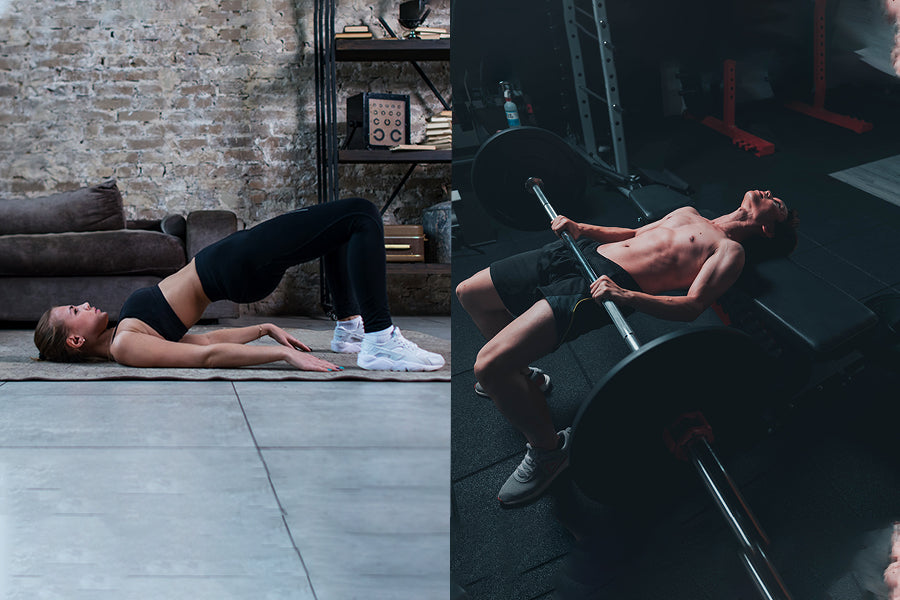Ladies and gentlemen, we're here to discuss the battle between two beloved glute-building exercises: the glute bridge and the hip thrust. It's a debate as old as time itself (well, maybe not that old, but you get the point).
On one side, we have the glute bridge, a classic move that requires nothing but your body weight and a willingness to feel the burn. On the other side, we have the hip thrust, a more advanced exercise that requires a bench, some weight, and a deep desire for a sculpted posterior.
Now, you may ask yourself, "What's the big deal? They're both glute exercises, right?" Ah, my dear friend, that's where you're wrong. These two moves may look similar but differ in benefits, difficulty, and equipment requirements.
And if you're serious about building a complete and shapely backside, you'll want to know which one is right for you. So, grab your protein shake and dive into the glute bridge vs. hip thrust debate.
Related Article: Glute Workout: The Expert Guide to the Ultimate Glute Workout for Men
What Is Hip Thrust?

Hip thrusts are a compound exercise that primarily targets the glutes while also engaging the hamstrings.
Hip thrusts are an effective exercise for building strength and power in the glutes and can also help improve athletic performance and posture. They can be performed with various resistance levels, making them an excellent exercise for beginners and advanced lifters.
The hip thrust exercise necessitates raising the shoulders, and it typically requires some sort of upper back support and weight, usually in the form of a barbell.
To Do it,
- Sit on a bench with your knees and feet firmly on the ground.
- Rest your shoulder blades, but not your neck, against the bench.
- If required, use a barbell to your hip crease.
- Proceed to contract your glutes and core muscles, and gradually raise your hips until your back is parallel to the ground.
- Maintain this elevated position for about three seconds.
- Then, slowly lower yourself back down to your initial starting position.
Benefits of Hip Thrusts
The hip thrust is an effective exercise for building a firmer, more shapely backside. Consistent practice of hip thrusts can also lead to a more aesthetically pleasing physique, with a rounder and firmer butt.
Hip Thrusts Have a More Excellent Range of Motion
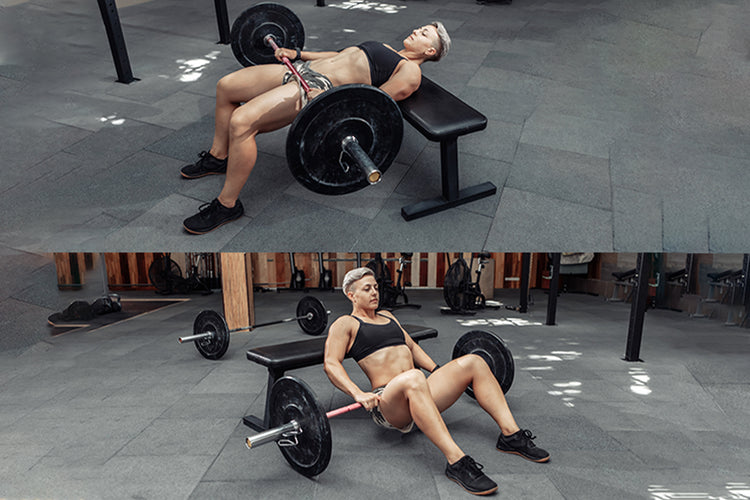
Compared to the glute bridge exercise, hip thrusts have a more extensive range of motion. This is because when performing hip thrusts, your back is elevated, requiring your hips to travel a greater distance with each repetition.
Consequently, as you move through this extended range of motion, your muscles are subjected to greater tension and load, resulting in increased muscle activation and strength gains. You can also take Whey Protein Supplements to increase muscle mass during your workout sessions.
Builds Serious Strength
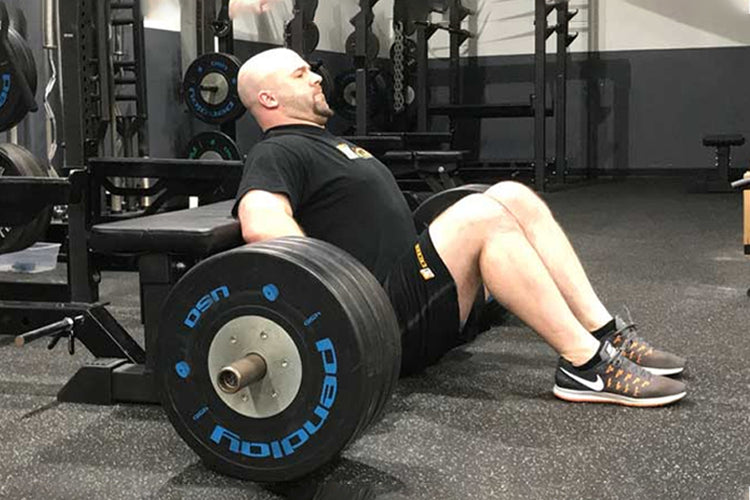
Hip thrusts are renowned for their ability to develop significant muscle strength, making them the most effective exercises for targeting the glutes. This versatile exercise can be performed using various weights, such as dumbbells, kettlebells, weighted chains, medicine balls, and barbells.
Due to the placement of the hip crease, hip thrusts allow for a higher weight capacity than glute bridges, which can result in increased muscle growth in the glutes and hamstrings.
What Are Glute Bridges?
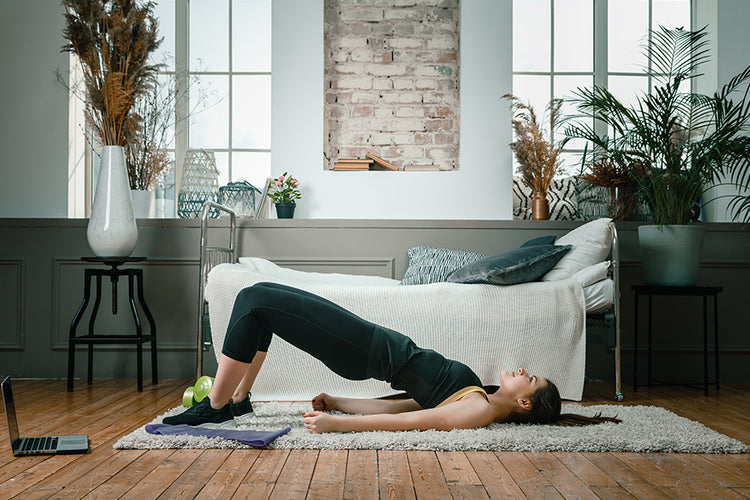
A glute bridge is a simple yet effective exercise that primarily targets the glutes while engaging the hamstrings and lower back. They are excellent exercises for beginners, as they help improve hip mobility, core stability, and glute activation.
To Do it,
- Assume a prone position on the yoga mat with your knees bent and feet flat.
- Keep your arms at your sides with your palms facing downwards.
- Proceed to elevate your hips off the ground by contracting your glutes and core muscles until your knees, hips, and shoulders are aligned straight.
- Hold this position for approximately three seconds before gradually lowering yourself back down to the starting point.
If you want to add weights to your routine, place a barbell (or mini barbell) on your hips. Then, grasp the load with both hands to stabilize it and lift your hips off the ground, pushing them toward the ceiling. For a more comprehensive guide on how to perform the glute bridge, refer to this instructional manual.
Related Article: The Ultimate Guide to Building Bigger and Stronger Glute Muscles
Benefits of Glute Bridges
Glute bridges are also a low-impact exercise, making them an excellent option for those with knee or back pain. Let's explore the specific benefits of glute bridges in greater detail and explain how to perform them correctly for optimal results.
An Array of Variations

The glute bridge offers an array of variations, including the single-leg bridge and the banded bridge kick. These variations can be performed with or without added weight. However, it is a body-weight activation exercise rather than a weighted strengthening one.
Although you can add weight, such as a barbell or dumbbell, to a glute bridge, some bodybuilders find it uncomfortable due to the angle of their body.
The bar can roll down your stomach if you're not holding it. Additionally, as the angle of your hips changes, the hip thrust provides a more significant potential for more substantial weights than the glute bridge.
Related Article: How to Do the Glute Ham Raises? Proper Form, Benefits, & Variations
Glute Bridge Informs Proper Glute Activation
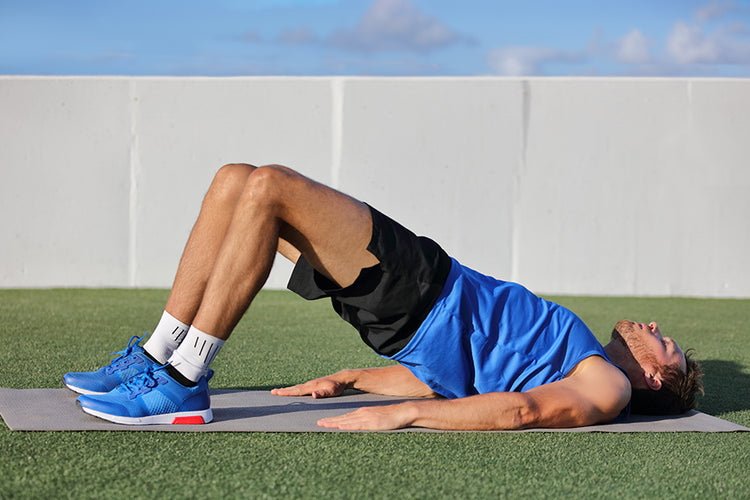
The glute bridge exercise is crucial in ensuring proper glute activation during workouts. It is common to hear the term "dead butt syndrome" thrown around in fitness circles, but what does it mean?
It refers to the phenomenon where the glute muscles are not adequately activated during exercises despite the presence of strength in the muscles.
In such cases, a bodyweight glute bridge can be a valuable tool to help teach individuals how to activate their glute muscles effectively. This is because the exercise focuses on contracting the glute muscles and driving the hips upward, thereby building awareness of the muscles involved and their role in various movements.
The glute bridge exercise is not only helpful in addressing issues of glute activation, but it can also serve as an effective warm-up routine for workouts. By performing a few sets of bodyweight glute bridges before beginning more demanding exercises, individuals can prime their glute muscles for optimal performance and reduce the risk of injury
It Eases Hip Flexor Pain
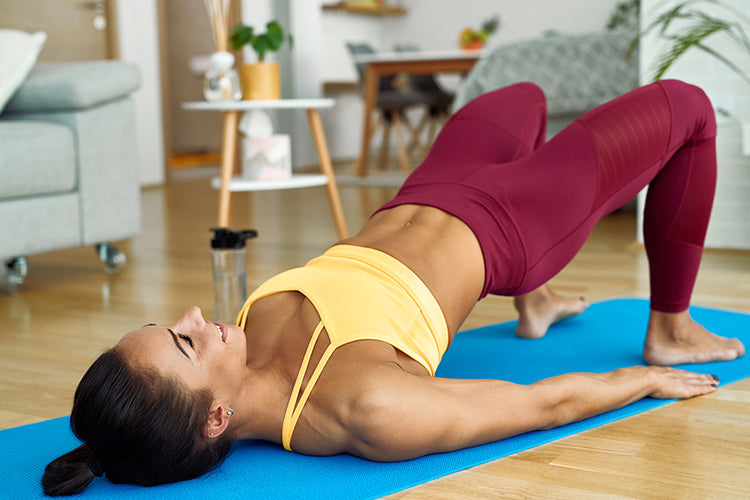
If you have a sedentary lifestyle, spending time sitting in front of a desk, in a car or public transport, and lounging on the couch while watching television; your hip flexors are more likely to be tight.
This is because the glute muscles, responsible for hip extension and stability, tend to become underactive when sitting for long periods. As a result, our hip flexors become overactive, leading to tightness and discomfort.
Doing slow and controlled glute bridges can help relieve hip flexor pain. The glute bridge exercise involves lifting the hips off the ground by contracting the glutes, which helps to activate and strengthen these muscles.
Related Article: The Ultimate 5-Day Glute Workout Plan
How to Choose Between the Glute Bridge Vs. Hip Thrust
Whether to perform a glute bridge or hip thrust during your workout can depend on your specific fitness goals and needs. Both exercises have benefits, and understanding when to choose one over the other can enhance your fitness routine.
To Warm Up: Glute Bridge
The glute bridge effectively activates the glutes and hamstrings. It is recommended to use unloaded glute bridges as a warm-up exercise to activate these muscles before performing any hip hinge exercises such as kettlebell swings, deadlifts, and good mornings.
This warm-up aims to "wake up" the glutes and hamstrings, which can help prevent lower back pain over time. If you already have lower back pain, using a trap bar instead of a barbell may be beneficial when deadlifting.
To Work on Mobility: Hip Thrust
The hip thrust involves a broader range of motion than the glute bridge, making it a bit challenging for people with poor hip mobility, a prevalent problem for individuals who sit for prolonged periods. Nevertheless, performing hip thrusts during a workout can help you enhance your hip mobility.
The first step towards incorporating hip thrust into your workout routine is to start without weights and work on the range of motion. Once you feel comfortable with the movement, gradually add weights to build strength within the newfound range of motion.
The ultimate goal is hip flexors that function correctly and enable you to move in all directions. If you perform three sets of 10 to 15 reps every other day, you may notice a difference in two weeks. This can provide significant long-term benefits.
If You Run: Glute Bridge
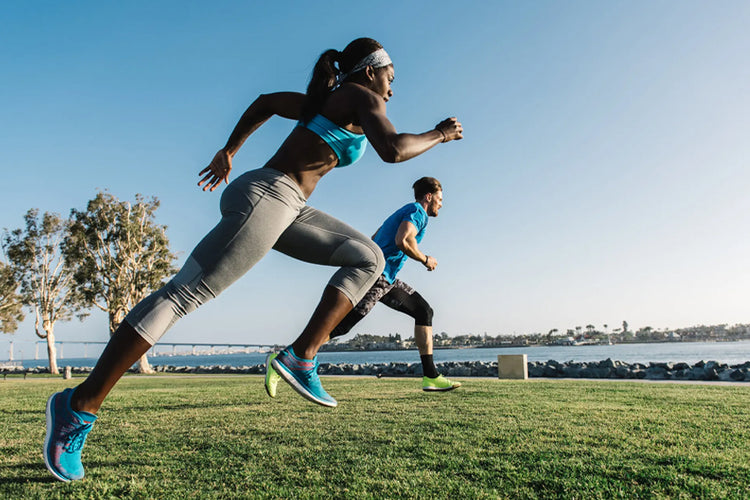
Runners often have difficulty engaging their glutes, leading to knee and hip pain because those areas compensate for underutilized glutes.
To combat this issue, incorporate two sets of 10 to 15 reps of glute bridges before running to activate the glutes and improve their usage during running. This increased glute activation can result in more powerful strides and improved running times.
To Build Strength: Hip Thrust
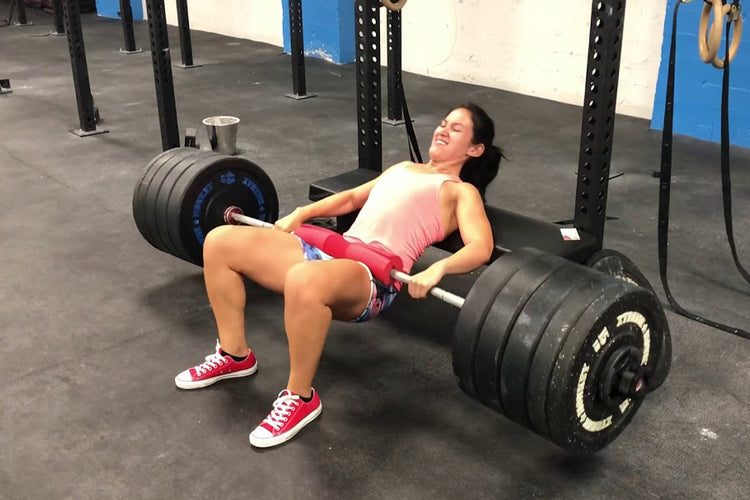
The hip thrust is the perfect exercise for those who aim to strengthen their glutes and make progress. As mentioned earlier, this workout activates the glutes more than a squat. Moreover, various methods to load the hip thrust allow you to personalize the exercise to your liking, enabling you to keep increasing the intensity as you advance.
With No Equipment: Glute Bridge

The beauty of the glute bridge is that it doesn't require any equipment or setup, unlike the hip thrust, which requires a bench or box for back support. If you want to add resistance, you can still perform the move loaded and experience some extra benefits.
However, remember that since glute bridges are typically done with less weight or just body weight, you may need to increase the number of repetitions to achieve muscle fatigue.
For an equipment-free glute workout, you can do a glute bridge followed by a single-leg glute bridge, which has been proven effective in building strength in the glutes, hamstrings, hip abductors, and core. Another option is to hold the contraction at the top of the repetition for thirty seconds.
Which One is Better: Glute Bridge Vs. Hip Thrust?
Including glute bridges and hip thrusts in your workout routine is recommended for a comprehensive glute-building exercise regimen. Variety is essential in exercise routines, and both exercises serve different purposes.
Glute bridges help warm up and prepare the muscles for exercise, while hip thrusts are effective for building strength as part of a strength circuit. Additionally, it is essential not solely to focus on glute exercises but to incorporate exercises targeting other muscles.
Conclusion
The glute bridge and hip thrust exercises are valuable additions to a workout routine for targeting and strengthening the gluteal muscles. The glute bridge is effective for warming up and working on mobility and can be done without equipment.
On the other hand, hip thrust is beneficial for building strength, and the exercise can be loaded in various ways. Incorporating both exercises into a well-rounded glute-building exercise regime can provide various benefits. Ultimately, choosing the two exercises depends on individual fitness goals and preferences.
Reading List
Article Sources
- Neto, Walter Krause, et al. "Barbell Hip Thrust, Muscular Activation, and Performance: A Systematic Review." Journal of Sports Science & Medicine, vol. 18, no. 2, June 2019, pp. 198-206. PubMed Central, https://www.ncbi.nlm.nih.gov/pmc/articles/PMC6544005/.








